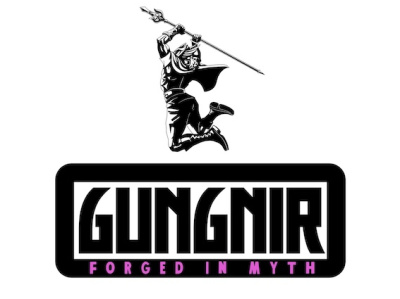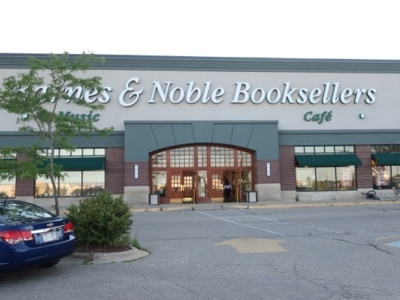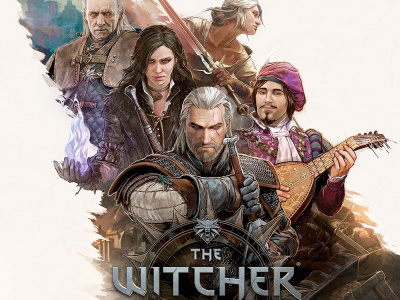“Almost my entire life has been in comic stores.”
Ryan Higgins gets to say that. He started as a helper at an Andover, Mass. store called Paper Heroes as a 12-year-old, and by the time he turned 18 and was living in California, took a job at Comics Conspiracy in Sunnyvale. In 2006, at age 27, he bought the store, going into business for himself.
Higgins also bounced through what he calls, “a bunch of random retail jobs, nothing really major,” including a Crown Books, a Blockbuster, and a record store. He had an entrepreneurial bent right from the jump. He tried to buy the record store, but the owner declined.
“The record store went out of business a year or two later, and I’m still in business,” Higgins says today. “It’s worked out well.”
Very well, in fact. Higgins’ 2017 numbers were up 10% over 2016, and his 2018 is tracking 20% over that. He attributes much of the success to a recent move and upgrade, but also to what he’s learned along the way…
THE GOOD
GET YOUR EXPERIENCE ON SOMEONE ELSE’S DIME
Maybe those random retail jobs weren’t so random.
“I was in a good position because I got to see everything that worked and everything that didn't work without my own money involved,” he says. “I got to take bits and pieces from each of the jobs and see what I liked and what I didn't like. Then I had my own ideas on top of that. I could experiment a little bit with other people's money when I was there.”
Higgins put in the time and the sweat, and made his prior retail experiences a learning experience.
“They gave me a little bit of leeway to say, ‘Hey, does this work? No, I think this is the best way to do this. Let me try to test this,’” he says. “In most cases, I think it worked. It was great experience.”
MAKE FRIENDS ON THE INTERNET
In the ’90s and early 2000s, Higgins was wired hard into the nascent comics Internet community. He made a lot of friends, many of whom were store owners, or who have gone on to creative positions, publishing positions, and become members of the press.
“I’ve known Graeme McMillan [Hollywood Reporter, Wired] for quite a while, and it’s nice to have those professional contacts,” Higgins says. “And when a writer like Chip Zdarsky started doing some big books, I'm like, ‘This is a guy that I know from his small press stuff. I know this is a guy to watch out for.’”
The friendships he’s made have paid dividends down the line.
“I was the right age at the right time, and it was the right community to be involved with,” Higgins says.
PUMP UP THE PODCAST
Higgins’ old friends have become new podcast guests, which pumps his business. The Comic Conspiracy podcast has reached 360 episodes, with consistency as its hallmark.
“We do it at the store, every single week, with my employees, some good friends, some good customers. We've had Dan Slott on. We've had Scott Snyder on. We’ve got a number of other creators lined up.”
Higgins plays inside baseball, and finds that it works.
“We tend to talk a little bit more on the industry side, which is not something many podcasts do,” he says. “Most are focused on the story end of it. But we do sales charts, we talk about retailer concerns and industry problems and a lot of the business end of it.”
The podcast draws a large audience, which has converted to a lot of mail order customers who are fans.
“It’s a not-insignificant amount of money from that every month,” Higgins says. “We were lucky enough to be able to find something that was popular, and do our own thing. We've become our own entity now.”
THE BAD
DON’T HOLD ON TO THE LOCATION TOO LONG
As mentioned, sales are way up at Comics Conspiracy. Higgins attributes a lot of the recent success to a great new location and a move. The only problem? He stayed at the old place too long.“We used to be in a little strip mall only about a mile from where we are now,” he says, “It was a small, dead mall that the owners had all but abandoned. We were almost forced to move because the building had significant structural problems, and we were one of the last remaining businesses there.”
The Bay Area has high rents, and Higgins was scared of taking on an even bigger rent. Finally, he bit the bullet…and lucked out.
“I got a very good location in a very good area, a very good price,” he says. “Stubbornness kept me at the old location a little bit longer than I should have been there. Now our walk‑in traffic and casual traffic has increased exponentially. We definitely made the right decision, but I really do think I should have done it sooner.”
GIVE UP CONTROL
Like many single-proprietor, single-store operations…yeah, Higgins can get pretty singular.
“I'm the only full‑time employee,” he says. “I'm the owner and manager and do 95 percent of the work. I have a bunch of part‑timers and they tell me, ‘Let us do more.’ If I have any problem, it's definitely that I need to give my guys a little more control and let them flex their abilities.”
The podcast and the mail order may be Higgins’ eventual key to letting something go.
“Our online storefront has increased our mail order 20 to 30 times what we were doing prior,” he says. “I don't have the ability to do everything. I still do all the major day‑to‑day store operations. But maybe I should have other people doing some of this stuff.”
GET IN TOUCH WITH THE INDIES
Higgins sees his journey as a reader-slash-store owner as the opposite of the norm.
“As time goes on, a lot of store owners’ interest in superhero stuff goes away,” he says. “I find mine has actually grown. When I was younger, the independent comics and Vertigo was what I read. I didn't read as much of the superhero stuff. Now it's completely flipped. I wish I was more in touch with the independent stuff and alternative comics. It's not from a lack of interest. I think it's mostly from a lack of time.”
Higgins notes that “most of the industry focus is around Marvel and DC,” and the movies and TV shows they generate, so he feels obligated to spend most of his time there. And yeah, it’s his part-timers picking up the slack for him there.
“I'm lucky I have some guys that are much more knowledgeable about the independent stuff than I am,” he says. “I do want to fix that, but I don't know when that's going to happen. That's one thing I wish I was able to fix right now.”
AND WHAT ELSE?
“I feel like I sit in the middle of two generations, the older school comic guys, many of who are still buying, and the younger, newer audience. I got to see this transition and be in the middle.”
“When Comixology started in 2010-2011, so many stores were, ‘That’s it! This is the end! We’re gonna be out of business in six months!’ But…nothing happened. Now, Comixology still does well, but it didn’t affect us. I think it actually helped the market.”
“I hate the narrative that single issues have to go away! That would kill the comic industry in a month. That’s the backbone of Marvel and DC, which is 90% of what Diamond sells.”
“Regarding the DC Walmart books…I’m Tom King’s biggest fan. But no comic store is going to be able to sell as many copies of a 100-page book with 88 pages of reprints and a 12-page original Tom King story to comic book fans, the Wednesday warriors, at the same number they’re selling another Tom King product. It’s just not going to happen.
“What I think and hope will happen is we’ve got 12 stories, 12 pages each, that’s 144 pages, about the size of a DC original graphic novel. I think we’re going to get our Tom King Superman, Brian Bendis Batman hardcover graphic novel for the direct market. And I will sell way more of those in a years’ time than I ever would the reprint comic.
“Walmart will stock these for 12 months, 18 months, whatever they do. And Walmart will not be able to make it work because comics just don’t work in big-box stores longterm. We’ll get a couple awesome stories from it, DC will get a lot of promotion, and in a year, no one will be talking about it.
“I’m not worried about Walmart. Like digital, like Scholastic, like Marvel Unlimited, getting more people invested in our material is good. Okay, Walmart gets this exclusive. Guess what? We get every other issue of Tom King’s Batman exclusive. No one else is going to carry it. Gamestop might not even be around in five years, much less carrying comics.
“The places where there are the most Walmarts also have the fewest comic stores. It serves a different part for the customers and the industry. I’m not worried about this thing. And we will get the superior package down the road.”
Click Gallery below for pics of the store!






 View Gallery: 5 Images
View Gallery: 5 Images 



